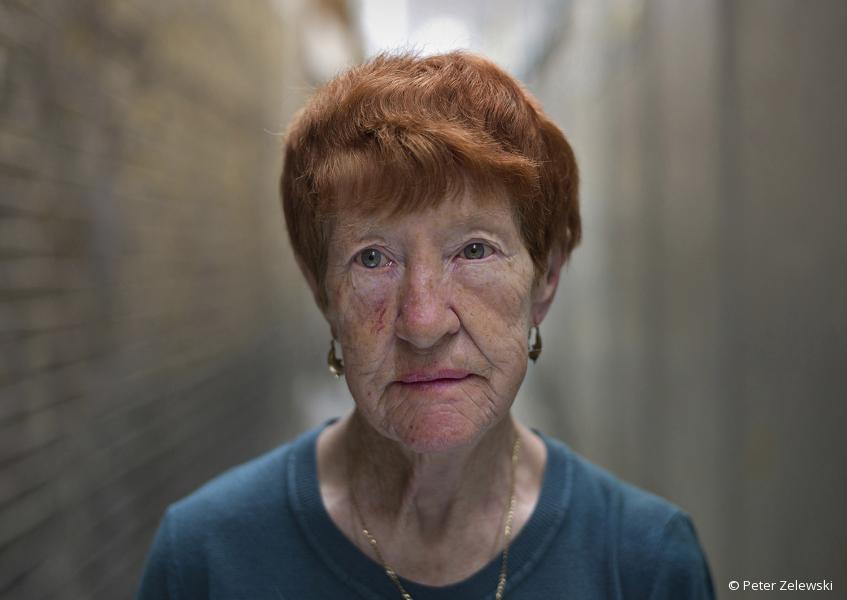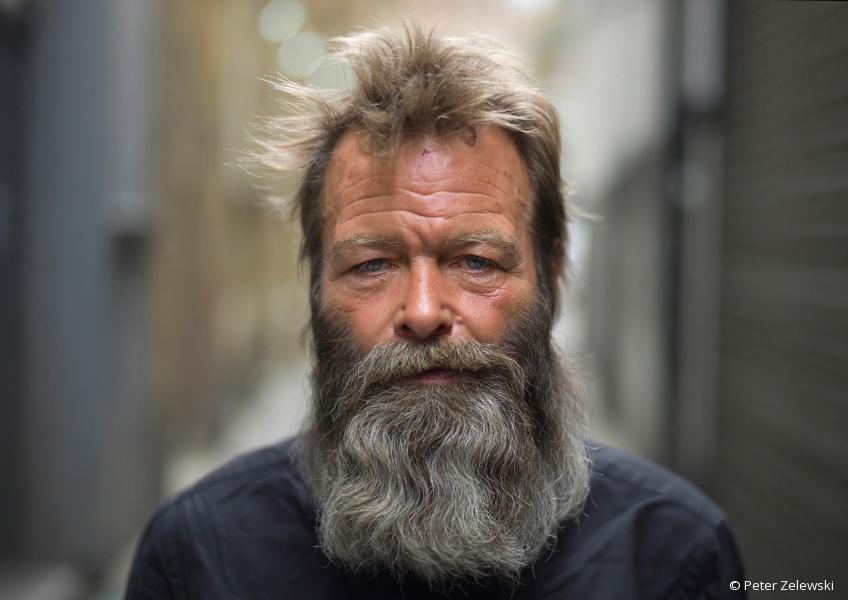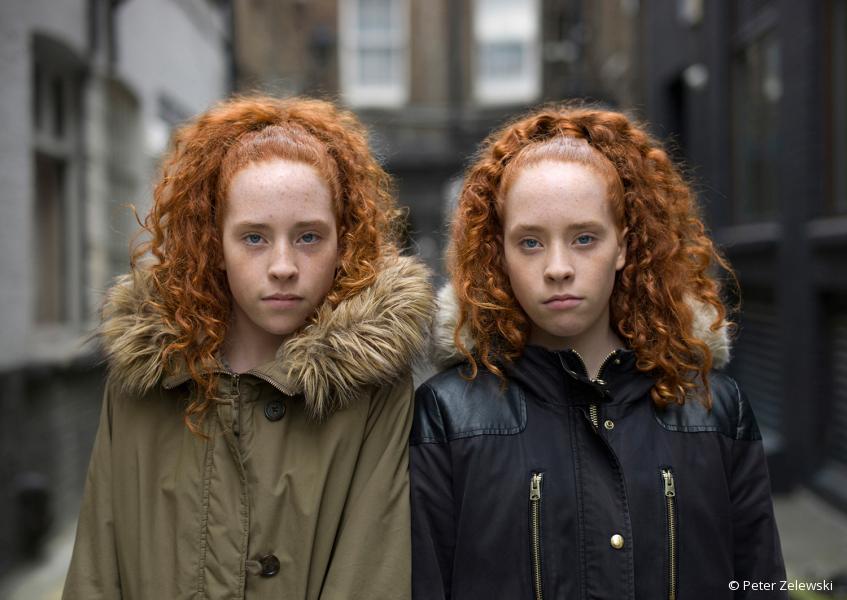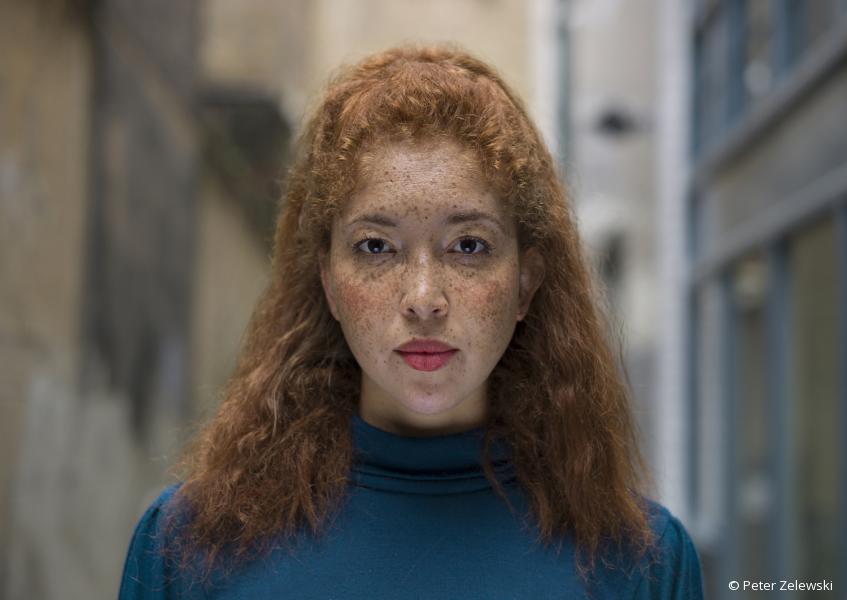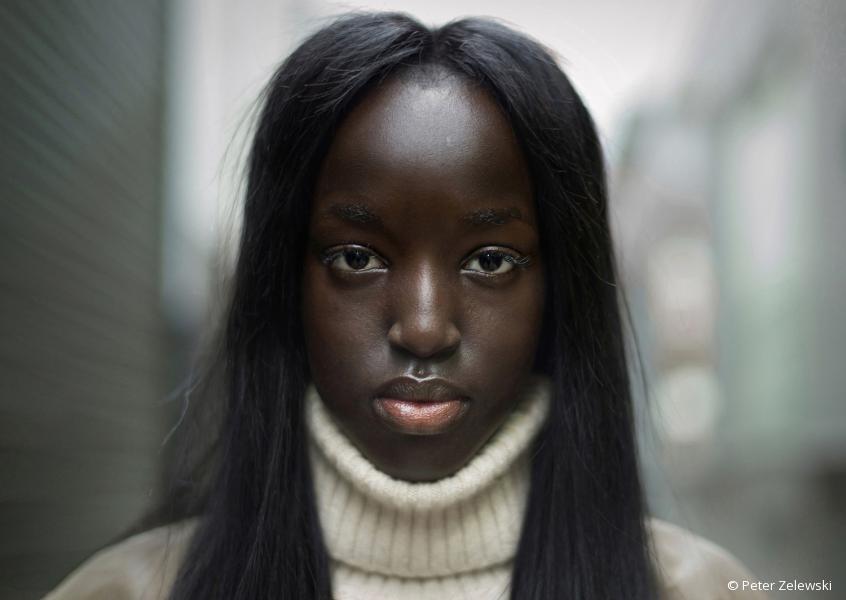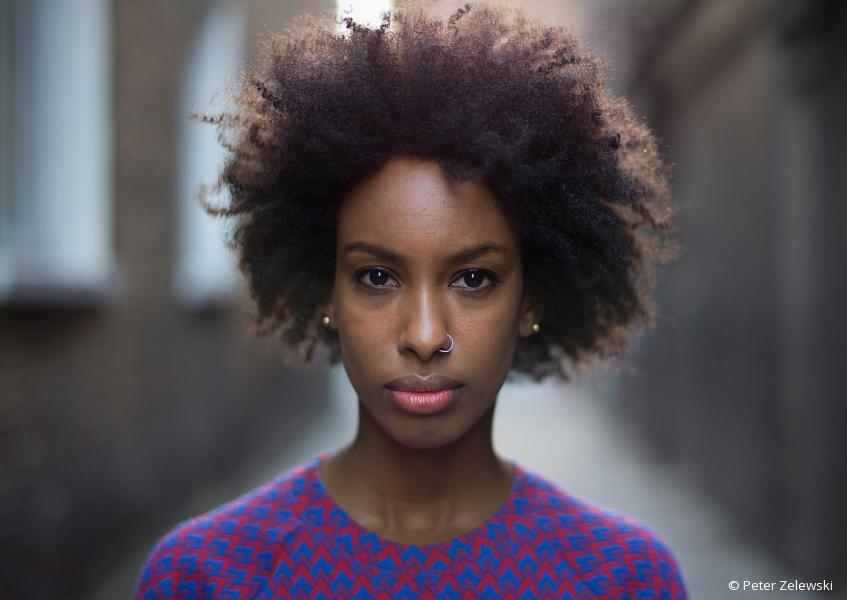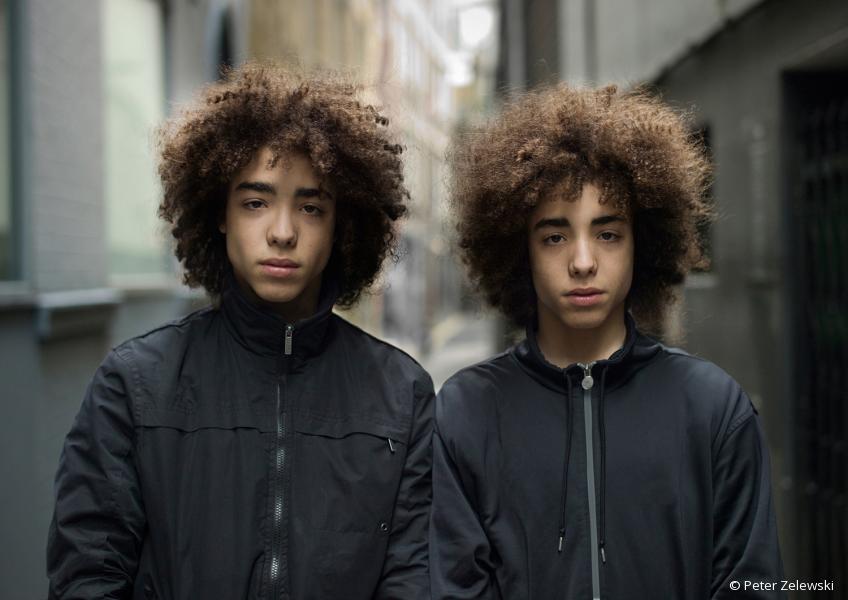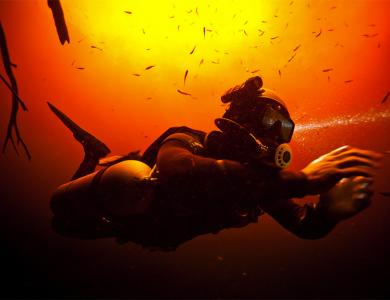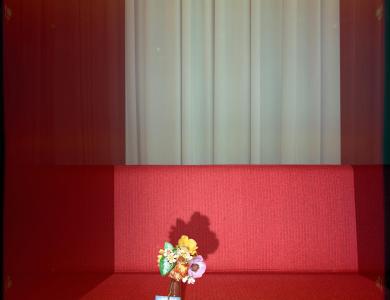This week theprintspace’s Harry Rose speaks to Peter Zelewski about what’s been going on since he won 3rd place at the Taylor Wessing Portrait prize.
Hello Peter! Thanks for taking the time to talk to us here at theprintspace. Let’s kick things off with how did you first get into photography?
Thank you, it’s a pleasure!
I first got into photography at a very early age. I was born in Detroit, USA and grew up during the 1960s whilst the city was going through very turbulent times amidst some of the most violent race riots the United States had experienced. I have vivid memories of my father, a keen and talented amateur photographer making his way into the city to document the social unrest during these changing times. Very early on, my father’s photography influence started to rub off on me as I accompanied him on his photographic journeys into the city allowing me to take photographs with his beloved Zeiss Icon 35mm film camera. He taught me that photographs had to be powerful to capture attention and also the importance of good lighting, interesting composition and most importantly showing respect to the people you were photographing. The essential principles of photography which I learned from my father were the foundations of my photographic education and are still relevant to my work today.
By the time I reached my teenage years, I was becoming more and more interested in photography and carried a camera with me at all times (much like my father did). Around the same time, I also discovered music and more importantly punk rock (The Clash, The Sex Pistols, The Jam etc.). Punk changed everything for me and I completely embraced the whole DIY ethos of the movement which found me forming my first band (influential hardcore Detroit punk band ‘Negative Approach’) and starting a fanzine (‘The Real Threat’) which I produced out of my bedroom. My mother was born in London so there was always an English influence in our house which resulted in my obsession with the UK punk scene including the fashion of London sub-culture (mods, skinheads, punks etc.). Although the music was the driving force in punk, the visual became just as important. Whilst playing bass in Negative Approach, I toured around the States and documented everything with my camera developing the prints the in my high school darkroom. It was an incredibly liberating time for me (I was only 17) and opened up a whole new world outside my local city. Punk not only taught me to be proud of my individuality but it also gave me the confidence to succeed in anything I set my mind to regardless of my social status or educational background.
In 1986 I made the decision to leave my hometown of Detroit and move to London. Following my creative passion, I ended up pursuing a career as a graphic designer. As my career as a designer developed I was spending a large amount of my professional working time in the studio art directing photoshoots for the company I was working for. Inevitably, I started working with photographers more and more and I felt it was important (with photography now moving into the digital age) to gain some knowledge of the technical aspects of photography so that I could communicate my ideas more effectively with the photographers I was working with. I eventually decided to re-acquaint myself with photography and bought myself an entry level DSLR. Because of my love for London and its inhabitants, I ended up taking street portraits and my passion for portraiture really started to grow from strength to strength. As I gained more knowledge with my portraiture work, I started my first photographic project entitled ‘the People of Soho’ focusing on making portraits of the local people in this small, but vibrant area of Central London which I had a real passion for. The project really helped me define my photographic style and brought me unexpected attention through the press and the photography community which also led to my first set of commercial photographic assignments. The knowledge I gained through taking hundreds of portraits on the streets has been invaluable to help my progression as a photographer. I have learned not only to work in the most unsuitable and unsettling urban environments (heavy rain, freezing cold, busy crowds etc.) but also the priceless experience of meeting, communicating and making portraits of complete strangers often in a very short time frame. I am now very fortunate that I can divide my time between commercial photography assignments, personal ongoing photographic projects and my professional graphic design work which I still practice to this day.
Last year you won 3rd place at the Taylor Wessing Portrait Prize, what’s happened since then and has winning this prestigious prize affected your practice as a photographer?
The exposure and recognition I have received since the Taylor Wessing Award has been amazing and completely unexpected. I was very fortunate that much of the press including the Guardian, Time Out magazine, Stylist magazine etc. used my image of Nyaueth as the lead image when reviewing or writing about the exhibition and this has really focused attention on my photography. Although I was not expecting commercial work on the back of Taylor Wessing, I have since had several commercial offers from companies who are looking for my exact style of photography for their campaigns and that is very flattering. Additionally, the Taylor Wessing/National Portrait Gallery seal of approval has gone a long way in re-enforcing my credibility and status as a photographer when talking with clients and pitching for commissions. Although any commissions I gain from the award are always going to be a bonus, the real benefit of being in the exhibition is to get my photography out to a whole new audience who may never have had a chance to see my work before. Since the exhibition, I have received numerous emails from photographers who saw my image of Nyaueth at the National Portrait Gallery and felt inspired to produce work like mine. This has led to me running my own series of ‘Street Portraiture’ workshops with the National Portrait Gallery which will take place in July 2016. Running a street portraiture workshop is something I have always wanted to do and I am really honoured to do this in partnership with the National Portrait Gallery.
The image you entered at Taylor Wessing and are exhibiting at theprintspace exhibition ‘Nyaueth’ has been seen by thousands all over the world. Why did you choose this particular portrait to be entered into the Taylor Wessing?
For me, the Taylor Wessing Portrait Prize has always been one of the highest accolades for any portrait photographer to achieve. I’ve been attending the exhibition for many years and it has always been a dream to have one of my portraits displayed on the National Portrait Gallery walls. I distinctly remember attending the exhibition in 2012 and seeing the incredible portrait of PC David Rathband, by one of my favourite photographers, Justin Sutcliffe, and just unable to take my eyes off it. Although at that time I was less confident with my own work, seeing that photograph gave me the motivation to push myself so that I could one day produce work of such high quality.
As my own photography developed through the years, and with the recognition I was achieving with my personal projects, I started to gain more confidence in my own work and felt 2015 was the right time to submit an entry to the Taylor Wessing Portrait Prize. Although the Taylor Wessing Prize receives much criticism for awarding only certain types of entries, I have always seen the selection process as very diverse and progressive which made me think there may be a place for my style of street portraiture in the exhibition. Unlike many photographers who enter the prize, I never set out to take a photograph especially for Taylor Wessing. Instead, I simply looked back at the work I created in 2015 and chose the image which resonated with me the most and for that reason it was always going to be my portrait of Nyaueth. The image of Nyaueth really does represent everything I am about as a photographer. The portrait is strong, direct, minimalist yet full of mystery and intrigue. Additionally, the portrait was a real milestone for me as I felt, after taking it, I had finally reached a certain level of quality within my own work which made the photograph very special to me.
The winning image itself is part of the ‘Beautiful Strangers’ project; tell me more about the motivations behind these images?
As I mentioned earlier, my first real street portraiture project was called ‘the People of Soho’. Although the project was never intended to be a fashion based project, by the sheer nature of the area I was photographing in, the project always had a very styled look to it. It became apparent at the early stages of the Soho project that some of my favourite images were the ones that weren’t overstyled but images of everyday individuals which had a much more natural and honest feel to them. Also, whilst photographing the images for the ‘People of Soho’ project I couldn’t help notice how society was continually bombarded with fashion advertising, portraying traditionally beautiful people (mostly models), on the newsstands in magazines or on the advertising billboards around London’s West End. For me, I had no real desire to photograph models and was always more excited to photograph real, everyday people (quirks and all) who had a certain uniqueness, personality and individuality about them and that is how the ‘Beautiful Strangers’ project came about. Because I am a firm believer that for any photographic project to be successful, you must have a passion for the area (and subject) you are photographing, the project was always going to be London based. Photographing in London once again not only gave me a hugely diverse mixture of people to meet and photograph but also it was an excellent opportunity to explore London’s range of ethnicities, cultures and styles which I was very keen to get across in this project. During 2014-2016, I managed to meet and photograph over 100 Londoners for my ‘Beautiful Strangers’ project in many different areas of the capital. ‘Beautiful Strangers’ has become the main focus of my photography work for the past 2-3 years and I am very happy with how the series has shaped and enabled me to grow with my own photography.
You’re seen by many as a street photographer, how did it feel having your image from a street photography series in a portrait competition like Taylor Wessing?
In all honesty, I have never considered myself a street photographer in the traditional sense of the word and it is a genre of photography which I don’t really feel applies to what I do. For me, street photography is all about capturing candid moments which I associate with photographers such as Henri Cartier-Bresson, Garry Winogrand, Lee Friedlander, Vivian Maier etc. Although the majority of my portraits are taken on the street, I consider myself first and foremost a portrait photographer.
With regards to having a ‘street portrait’ selected for the Taylor Wessing Exhibition, it is something I am immensely proud of. In the early days of my photography career, I remember attending my first Taylor Wesssing Exhibition and really feeling at odds by the work on display. Most of the photographs seemed to have been taken by photographers who already had a relationship with their sitters either through friendship or a commercial assignment and very few on display were spontaneous street portraits like the type I was producing. Having said that, I was still convinced that a quality portrait was a quality portrait regardless of where it was taken so I was adamant to continue developing my own style of photography in the hope of producing a quality portrait that could one day grace the walls of the NPG. I suppose that is why I feel the Taylor Wessing Award is so special because of the open mindedness and forward thinking of the judges who were prepared to break tradition allowing my portrait, a street portrait, a place in the exhibition.
Thanks for your time Peter, we look forward to your Q&A at theprintspace on the 28th June at our Gallery, and seeing your award winning portrait on our walls!
Thank you, I’m looking forward to the Q&A too!
Zelewski is part of the ANIMA exhibition, a collaborative group show bringing together thirteen of the finest contemporary photographic artists in the portrait genre.
Exhibition open until 25th July. Free entry.

